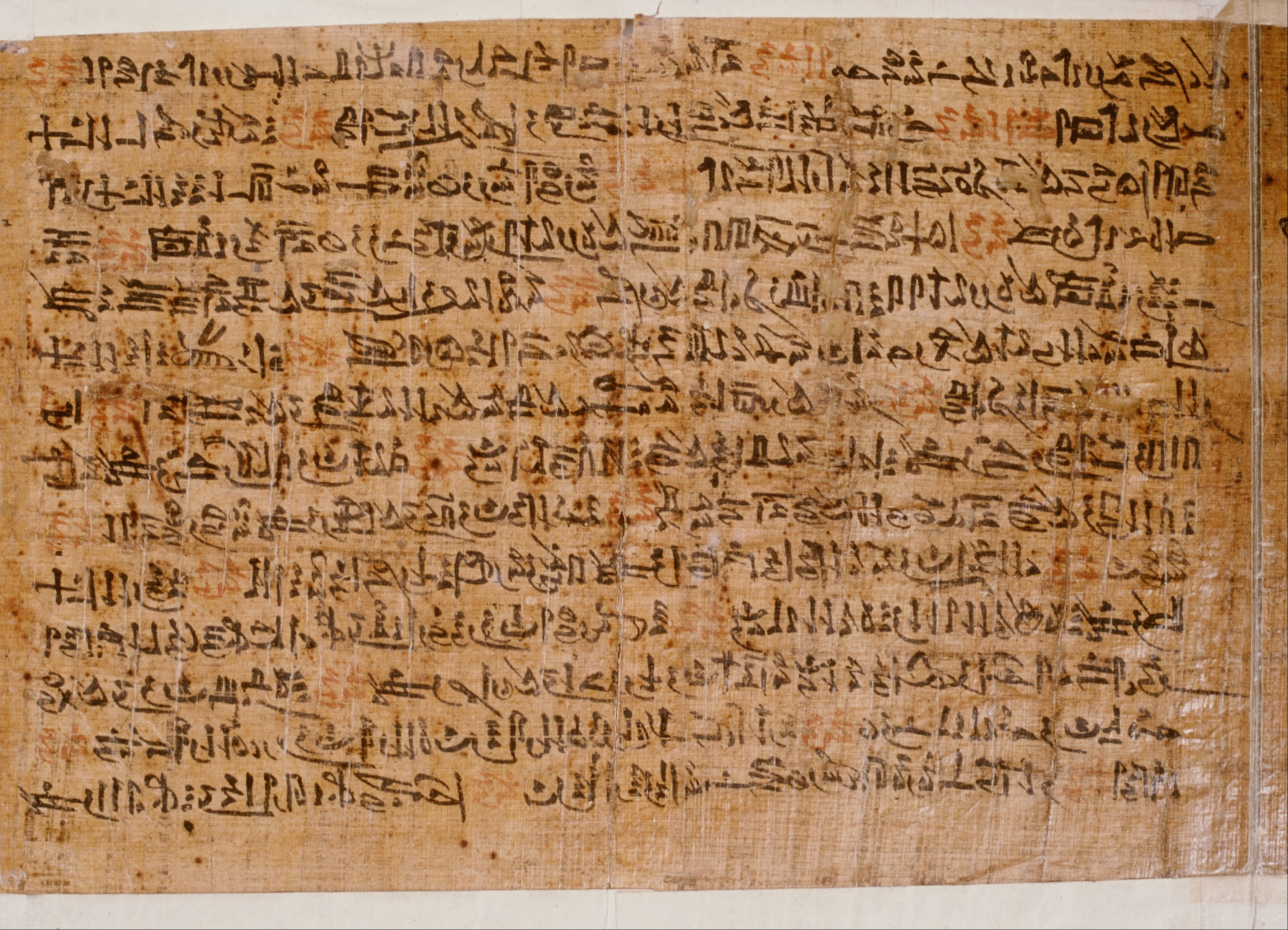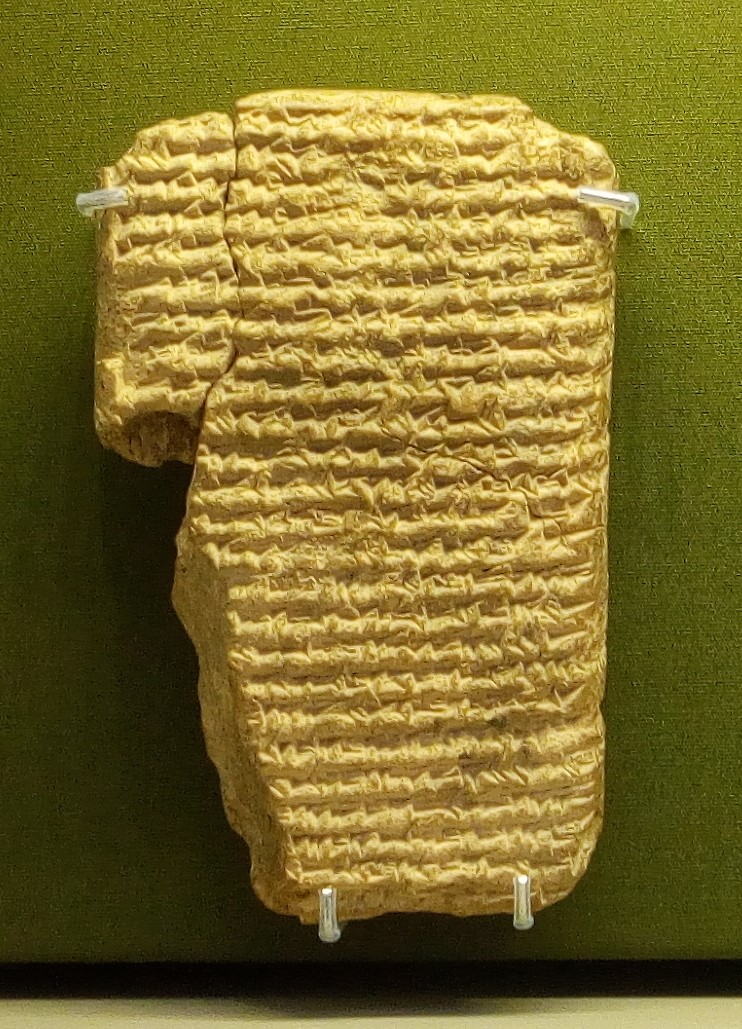|
Third Intermediate Period Of Egypt
The Third Intermediate Period of ancient Egypt began with the death of Pharaoh Ramesses XI in 1077 BC, which ended the New Kingdom, and was eventually followed by the Late Period. Various points are offered as the beginning for the latter era, though it is most often regarded as dating from the foundation of the Twenty-Sixth Dynasty by Psamtik I in 664 BC, following the departure of the Nubian Kushite rulers of the Twenty-fifth Dynasty after they were driven out by the Assyrians under King Ashurbanipal. The use of the term "Third Intermediate Period", based on the analogy of the well-known First and Second Intermediate Periods, was popular by 1978, when British Egyptologist Kenneth Kitchen used the term for the title of his book on the period. While Kitchen argued that the period was 'far from being chaotic' and hoped that his work would lead to the abolishment of the term, with his own preference being the 'Post-Imperial epoch', his use of the term as a title seems ... [...More Info...] [...Related Items...] OR: [Wikipedia] [Google] [Baidu] |
Tanis
Tanis ( ; ; ) or San al-Hagar (; ; ; or or ; ) is the Greek name for ancient Egyptian ''ḏꜥn.t'', an important archaeological site in the northeastern Nile Delta of ancient Egypt, Egypt, and the location of a city of the same name. Tanis was the capital of the Egyptian Kingdom in its Twenty-first Dynasty of Egypt, 21st and Twenty-second Dynasty of Egypt, 22nd Dynasties. It is located on the Tanitic branch of the Nile, which has long since silted up. History Tanis is unattested before the 19th Dynasty of Egypt, when it was the capital of the 14th nome (Egypt), nome of Lower Egypt. A temple inscription datable to the reign of Ramesses II mentions a "Field of Tanis", while the city ''in se'' is securely attested in two 20th Dynasty documents: the Onomasticon of Amenope and the Story of Wenamun, as the home place of the pharaoh-to-be Smendes. The earliest known Tanite buildings are datable to the 21st Dynasty. Although some monuments found at Tanis are datable earlier than ... [...More Info...] [...Related Items...] OR: [Wikipedia] [Google] [Baidu] |
Ancient Egypt
Ancient Egypt () was a cradle of civilization concentrated along the lower reaches of the Nile River in Northeast Africa. It emerged from prehistoric Egypt around 3150BC (according to conventional Egyptian chronology), when Upper and Lower Egypt were amalgamated by Menes, who is believed by the majority of List of Egyptologists, Egyptologists to have been the same person as Narmer. The history of ancient Egypt unfolded as a series of stable kingdoms interspersed by the "Periodization of ancient Egypt, Intermediate Periods" of relative instability. These stable kingdoms existed in one of three periods: the Old Kingdom of Egypt, Old Kingdom of the Early Bronze Age; the Middle Kingdom of Egypt, Middle Kingdom of the Middle Bronze Age; or the New Kingdom of Egypt, New Kingdom of the Late Bronze Age. The pinnacle of ancient Egyptian power was achieved during the New Kingdom, which extended its rule to much of Nubia and a considerable portion of the Levant. After this period, Egypt ... [...More Info...] [...Related Items...] OR: [Wikipedia] [Google] [Baidu] |
Second Intermediate Period Of Egypt
The Second Intermediate Period dates from 1700 to 1550 BC. It marks a period when ancient Egypt was divided into smaller dynasties for a second time, between the end of the Middle Kingdom and the start of the New Kingdom. The concept of a Second Intermediate Period generally includes the 13th through to the 17th dynasties, however there is no universal agreement in Egyptology about how to define the period. It is best known as the period when the Hyksos people of West Asia established the 15th Dynasty and ruled from Avaris, which, according to Manetho's '' Aegyptiaca'', was founded by a king by the name of Salitis. The settling of these people may have occurred peacefully, although later recounts of Manetho portray the Hyksos "as violent conquerors and oppressors of Egypt". The Turin King List from the time of Ramesses II remains the primary source for understanding the chronology and political history of the Second Intermediate Period, along with studying the typology of ... [...More Info...] [...Related Items...] OR: [Wikipedia] [Google] [Baidu] |
First Intermediate Period Of Egypt
The First Intermediate Period, described as a 'dark period' in ancient Egyptian history, spanned approximately 125 years, c. 2181–2055 BC, after the end of the Old Kingdom. It comprises the Seventh (although this is mostly considered spurious by Egyptologists), Eighth, Ninth, Tenth, and part of the Eleventh Dynasties. The concept of a "First Intermediate Period" was coined in 1926 by Egyptologists Georg Steindorff and Henri Frankfort. Very little monumental evidence survives from this period, especially from the beginning of the era. The First Intermediate Period was a dynamic time in which rule of Egypt was roughly equally divided between two competing power bases. One of the bases was at Heracleopolis in Lower Egypt, a city just south of the Faiyum region, and the other was at Thebes, in Upper Egypt. It is believed that during that time, temples were pillaged and violated, artwork was vandalized, and the statues of kings were broken or destroyed as a result of the pos ... [...More Info...] [...Related Items...] OR: [Wikipedia] [Google] [Baidu] |
Ashurbanipal
Ashurbanipal (, meaning " Ashur is the creator of the heir")—or Osnappar ()—was the king of the Neo-Assyrian Empire from 669 BC to his death in 631. He is generally remembered as the last great king of Assyria. Ashurbanipal inherited the throne as the favored heir of his father Esarhaddon; his 38-year reign was among the longest of any Assyrian king. Though sometimes regarded as the apogee of ancient Assyria, his reign also marked the last time Assyrian armies waged war throughout the ancient Near East and the beginning of the end of Assyrian dominion over the region. Esarhaddon selected Ashurbanipal as heir 673. The selection of Ashurbanipal bypassed the elder son Shamash-shum-ukin. Perhaps in order to avoid future rivalry, Esarhaddon designated Shamash-shum-ukin as the heir to Babylonia. The two brothers jointly acceded to their respective thrones after Esarhaddon's death in 669, though Shamash-shum-ukin was relegated to being Ashurbanipal's closely monitored vassal. Mu ... [...More Info...] [...Related Items...] OR: [Wikipedia] [Google] [Baidu] |
Neo-Assyrian Empire
The Neo-Assyrian Empire was the fourth and penultimate stage of ancient Assyrian history. Beginning with the accession of Adad-nirari II in 911 BC, the Neo-Assyrian Empire grew to dominate the ancient Near East and parts of South Caucasus, North Africa and East Mediterranean throughout much of the 9th to 7th centuries BC, becoming the List of largest empires, largest empire in history up to that point. Because of its geopolitical dominance and ideology based in world domination, the Neo-Assyrian Empire has been described as the first world empire in history. It influenced other empires of the ancient world culturally, administratively, and militarily, including the Neo-Babylonian Empire, Neo-Babylonians, the Achaemenid dynasty, Achaemenids, and the Seleucid Empire, Seleucids. At its height, the empire was the strongest military power in the world and ruled over all of Mesopotamia, the Levant and Egypt, as well as parts of Anatolia, Arabian Peninsula, Arabia and modern-day Ir ... [...More Info...] [...Related Items...] OR: [Wikipedia] [Google] [Baidu] |
Kingdom Of Kush
The Kingdom of Kush (; Egyptian language, Egyptian: 𓎡𓄿𓈙𓈉 ''kꜣš'', Akkadian language, Assyrian: ''Kûsi'', in LXX Χους or Αἰθιοπία; ''Ecōš''; ''Kūš''), also known as the Kushite Empire, or simply Kush, was an ancient kingdom in Nubia, centered along the Nile Valley in what is now northern Sudan and southern Egypt. The region of Nubia was an early cradle of civilization, producing several complex societies that engaged in trade and industry. The city-state of Kerma emerged as the dominant political force between 2450 and 1450 BC, controlling the Nile Valley between the first and fourth Cataracts of the Nile, cataracts, an area as large as Egypt. The Egyptians were the first to identify Kerma as "Kush" probably from the indigenous ethnonym "Kasu", over the next several centuries the two civilizations engaged in intermittent warfare, trade, and cultural exchange. Much of Nubia came under Egyptian rule during the New Kingdom of Egypt, New Kingdom pe ... [...More Info...] [...Related Items...] OR: [Wikipedia] [Google] [Baidu] |
Nubia
Nubia (, Nobiin language, Nobiin: , ) is a region along the Nile river encompassing the area between the confluence of the Blue Nile, Blue and White Nile, White Niles (in Khartoum in central Sudan), and the Cataracts of the Nile, first cataract of the Nile (south of Aswan in southern Egypt) or more strictly, Al Dabbah, Sudan, Al Dabbah. It was the seat of one of the earliest civilizations of ancient Africa, the Kerma culture, which lasted from around 2500 BC until its conquest by the New Kingdom of Egypt under Pharaoh Thutmose I around 1500 BC, whose heirs ruled most of Nubia for the next 400 years. Nubia was home to several African empires, empires, most prominently the Kingdom of Kush, which conquered Egypt in the eighth century BC during the reign of Piye and ruled the country as its Twenty-fifth Dynasty of Egypt, 25th Dynasty. From the 3rd century BC to 3rd century AD, northern Nubia was invaded and annexed to Egypt, ruled by the Ptolemaic Kingdom, Greeks and Roman Empire, R ... [...More Info...] [...Related Items...] OR: [Wikipedia] [Google] [Baidu] |
Psamtik I
Wahibre Psamtik I (Ancient Egyptian: ) was the first pharaoh of the Twenty-sixth Dynasty of Egypt, the Saite period, ruling from the city of Sais in the Nile delta between 664 and 610 BC. He was installed by Ashurbanipal of the Neo-Assyrian Empire, against the Kushite rulers of the Twenty-fifth Dynasty, but later gained more autonomy as the Assyrian Empire declined. Name The Egyptian name , pronounced as , was a short form of , meaning "the man of Meṯek", with Meṯek presumably a deity. His name was rendered by the Assyrians as Pishamilki (), by the Ancient Greeks as (), and by the Romans as . Psamtik was also called Nabu-shezibanni ( and ), meaning "O Nabu, save me!" by the Assyrians. Background In 671 BCE, the Assyrian king Esarhaddon invaded Egypt. This invasion was directed against the Kushite rulers of the Twenty-fifth Dynasty of Egypt, who had been in control of Upper Egypt, rather than against the native Egyptian rulers. The Assyrians created an admin ... [...More Info...] [...Related Items...] OR: [Wikipedia] [Google] [Baidu] |
Twenty-sixth Dynasty Of Egypt
The Twenty-sixth Dynasty of Egypt (notated Dynasty XXVI, alternatively 26th Dynasty or Dynasty 26) was the last native dynasty of ancient Egypt before the Persian conquest in 525 BC (although other brief periods of rule by Egyptians followed). The dynasty's reign (664–525 BC) is also called the Saite Period after the city of Sais, where its pharaohs had their capital, and marks the beginning of the Late Period of ancient Egypt.Aidan Dodson, Dyan Hilton. ''The Complete Royal Families of Ancient Egypt''. The American University in Cairo Press, London 2004 History This dynasty traced its origins to the Twenty-fourth Dynasty. Psamtik I was probably a descendant of Bakenranef. However, other sources describe him as of Libyan descent. Following the Neo-Assyrian conquest of Egypt during the reigns of Taharqa and Tantamani, and the subsequent collapse of the Napata-based Twenty-fifth Dynasty of Egypt, Psamtik I was recognized as sole king over all of Egypt. Psamtik formed alli ... [...More Info...] [...Related Items...] OR: [Wikipedia] [Google] [Baidu] |
Late Period Of Ancient Egypt
The Late Period of ancient Egypt refers to the last flowering of native Egyptian rulers after the Third Intermediate Period in the 26th Saite Dynasty founded by Psamtik I, but includes the time of Achaemenid Persian rule over Egypt after the conquest by Cambyses II in 525 BC as well. The Late Period existed from 664 BC until 332 BC, following a period of foreign rule by the Nubian 25th Dynasty and beginning with a short period of Neo-Assyrian suzerainty, with Psamtik I initially ruling as their vassal. The period ended with the conquests of the Persian Empire by Alexander the Great and establishment of the Ptolemaic dynasty by his general Ptolemy I Soter, one of the Hellenistic diadochi from Macedon in northern Greece. With the Macedonian Greek conquest in the latter half of the 4th century BC, the age of Hellenistic Egypt began. History 26th Dynasty The Twenty-Sixth Dynasty, also known as the Saite Dynasty after its seat of power the city of Sais, reigned from ... [...More Info...] [...Related Items...] OR: [Wikipedia] [Google] [Baidu] |









